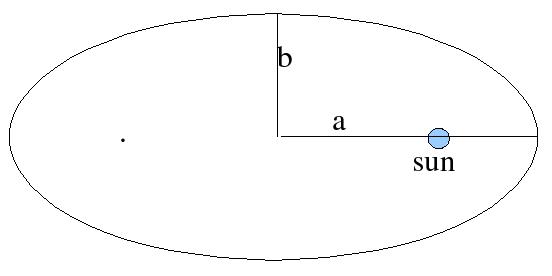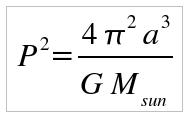Historical Developments in Gravity
1543 - Polish astronomer Nicolas Copernicus publishes
"de revolutionibus" or "of revolutions of the planets".
1601-1619 - German astronomer Johannes Kepler describes the laws of planetary motion
(he didn't know the physics behind his observations"
1660-1680 - English scientist Issac Newton coins F=ma and F=GmM/r2
1798 - English physicist Henry Cavendish measures value for G in the lab
Kepler's Laws
1) The planets move in elliptical orbits with the sun at one focus of the ellipse.
a is the "semi-major" axis of the orbit. Here the "eccentricity" of the orbit is
e = 1 - b/a.

2) A line from the sun to a planet sweeps out equal areas in equal times.
(This means that the planet moves faster when closer to the sun, a consequence of
conservation of angular momentum.)


3) The period of the orbit squared is proportional to the semi-major axis of the orbit cubed.
The eccentricity does not matter, only a.
Kepler's Laws simulator 1
Kepler's Laws simulator 2
Kepler's Law Applet
Kepler's Law applet


